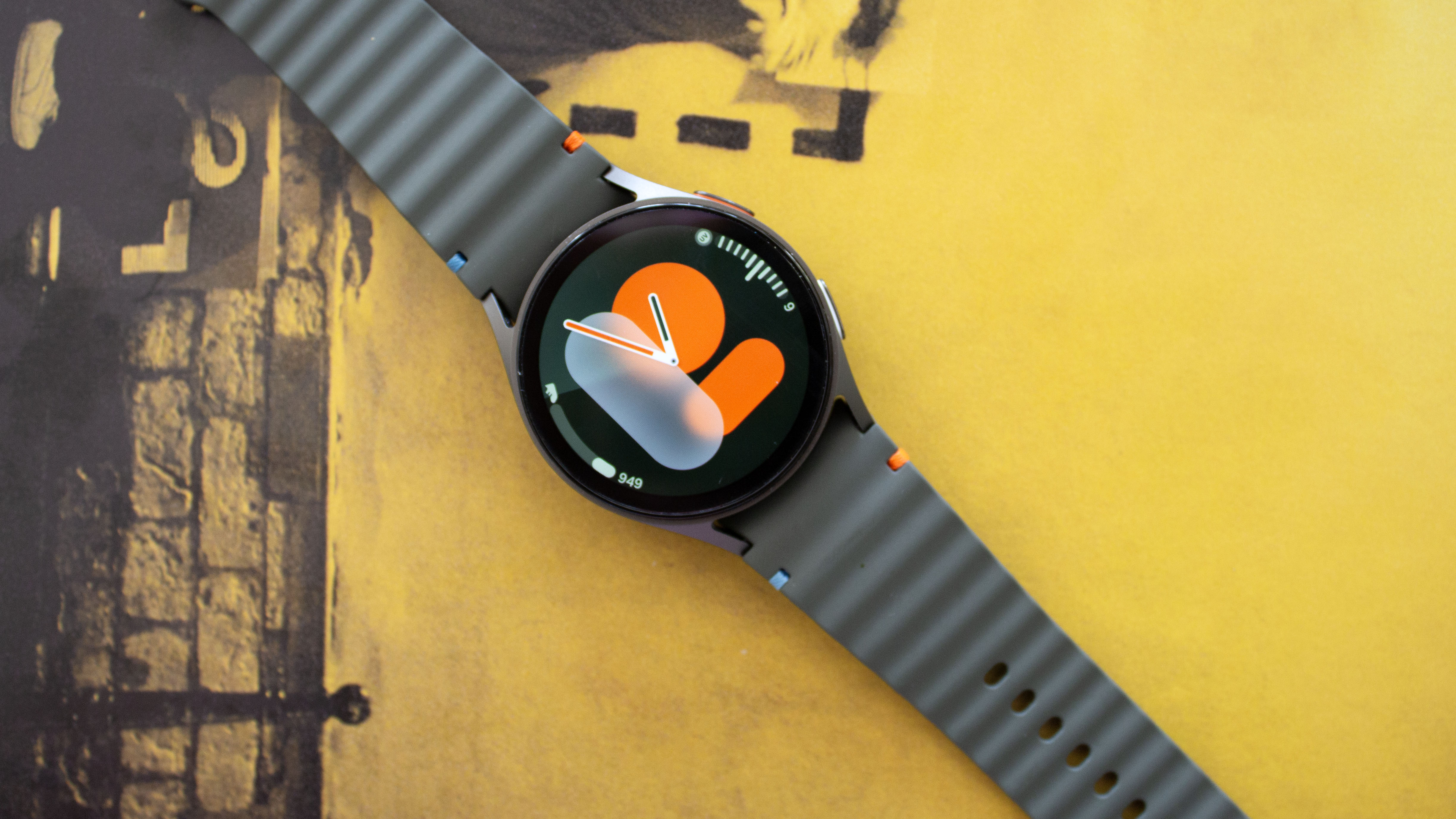
If I had written this Samsung Galaxy Watch 7 review a week ago before wearing and testing this smartwatch, I would have said it was one of the more boring announcements Samsung made during the second Galaxy Unpacked of 2024. I'd also have said it was too big for smaller wrists, a little boring with the same design as its predecessor and hiding behind AI features rather than taking the company's standard smartwatch forward.
But they say you should never judge a book by its cover and I'd say you should never judge a smartwatch before spending at least a week with it. Well, that I have now done and the Samsung Galaxy Watch 7 didn't just win me over with its punchy screen and fluid performance, but it has even managed to convince me that AI has a place in smartwatches, not just laptops and phones.
Is the Galaxy Watch 7 one of the best smartwatches out there? That's a hard yes. Here's my review after living with this delight day and night.
Samsung Galaxy Watch 7 review
Price and availability
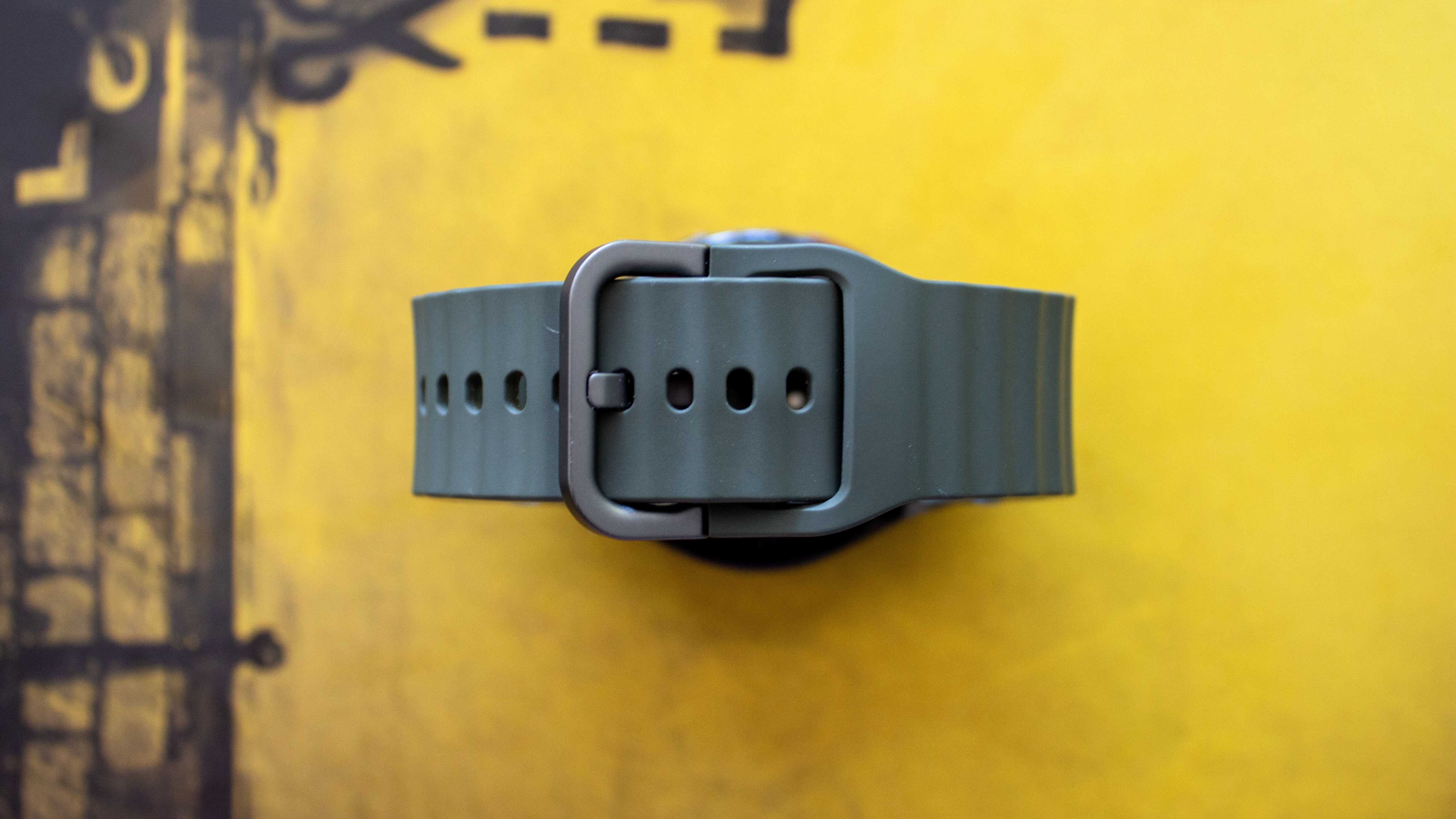
Samsung revealed the Galaxy Watch 7 and Galaxy Watch Ultra during its Galaxy Unpacked event in Paris on 10 July, and availability began a couple of weeks later on 24 July. It's available directly through Samsung UK, Samsung US and Samsung AU, as well as a number of major retailers globally.
There are a couple of different models, with two case options of 40mm and 44mm, both of which come in Green or Silver colour options, and with Bluetooth only or Bluetooth and LTE connectivity. You can also select between four different watch bands including Sport Band, Fabric Band Slim, Milanese Band and Fabric Band, which also come in various colour options and size options.
Pricing varies depending on the size, connectivity option and band you choose, but the starting price for the 40mm model is £289 / $299.99 / A$549, depending on whether you're in the UK, US or Australia. The starting price for the 44mm model is £319 / $329.99 / A$699.
I tested the 40mm Bluetooth + 4G model in Green with a Green Sport Band in S/M.
Specifications
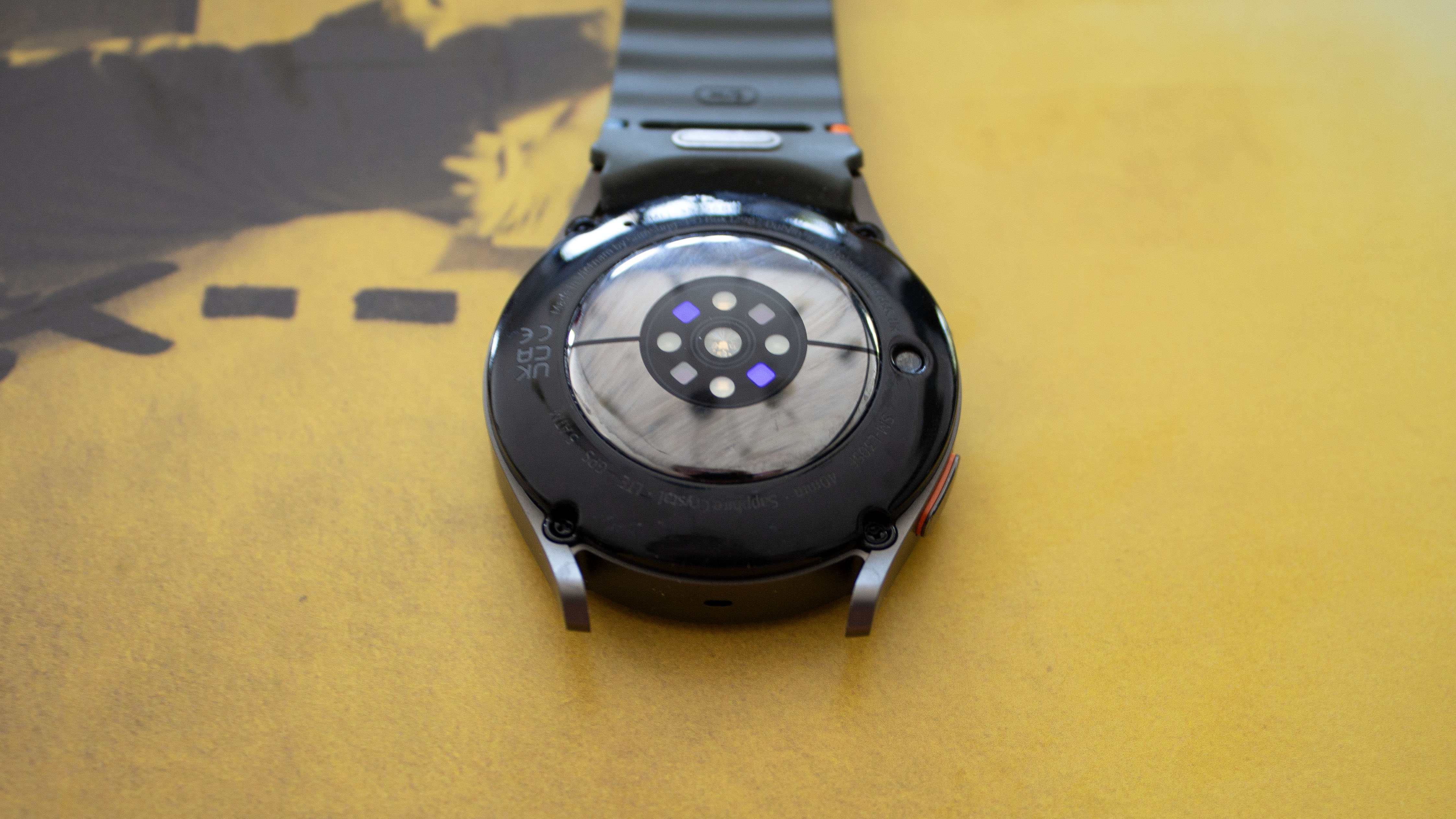
- Works with: Android
- Sizes: 40mm / 44mm
- Case material: Aluminium
- Display: Sapphire Glass Crystal, Super AMOLED, 2,000 nits
- Display size: 1.31-inch 432 x 432 pixels (40mm), 1.47-inch 480 x 480 pixels (44mm)
- Dimensions: 40.4mm x 40.4mm x 9.7mm (40mm), 44.4mm x 44.4mm x 9.7mm (44mm)
- Processor: Exynos W1000 (5-core, 3nm)
- Battery: 300mAh (40mm), 425mAh (44mm)
- Durability: 5ATM / IP68 / MIL-STD-810H
- Weight: 28.9g (40mm), 33.8g (44mm)
- Connectivity: Bluetooth 5.3 / Wi-Fi 2.4GHz and 5GHz / Dual GPS (L1 and L5 Band) / NFC / LTE
- Storage: 2GB RAM, 32 GB internal storage
- Operating system: Wear OS 5
Design and build quality
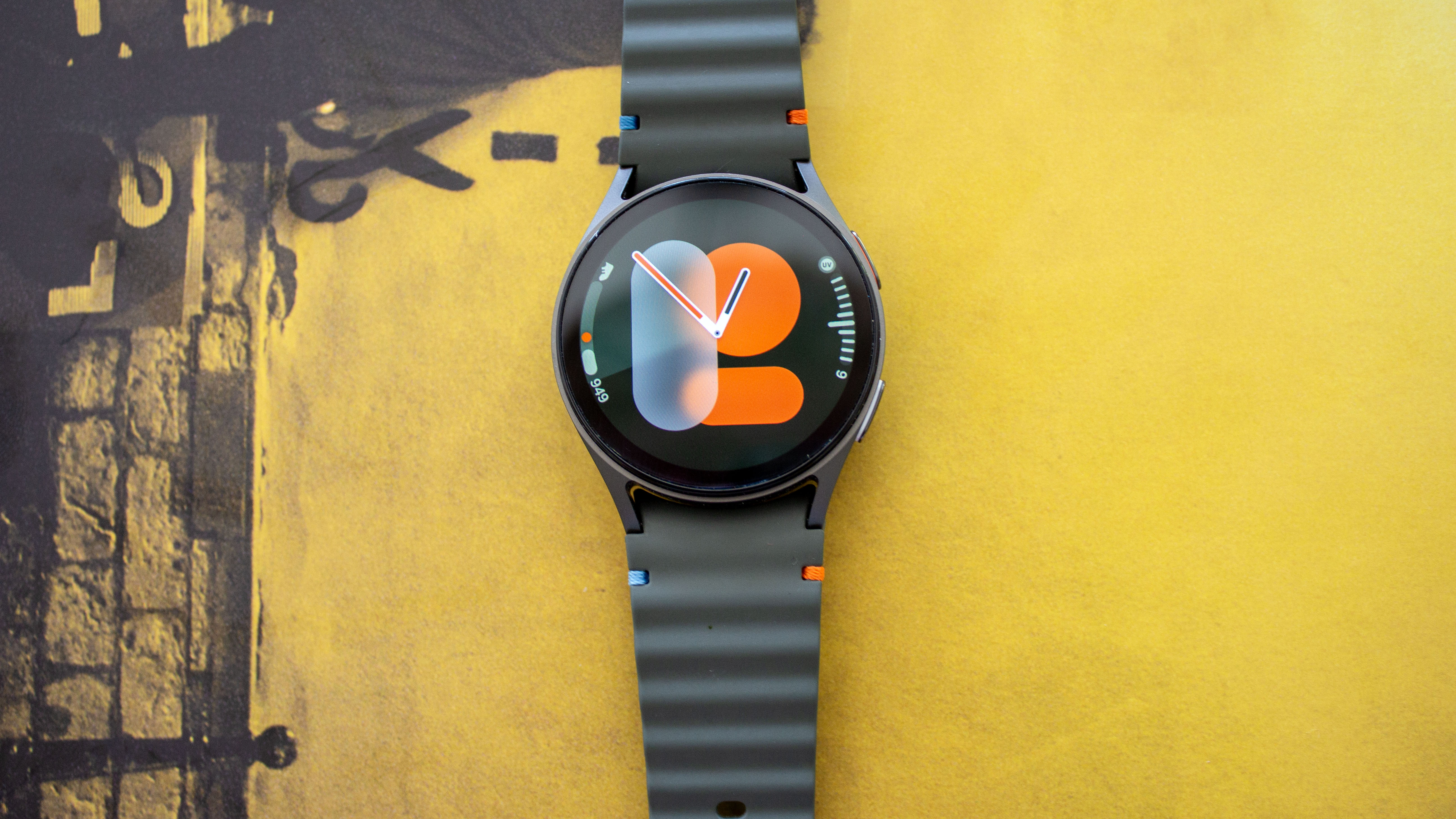
The Samsung Galaxy Watch 7 is identical in form factor to its predecessor, but that's by no means a bad thing. Apple has retained pretty much the same design on its Apple Watch since the smartwatch launched in 2015, and I don't complain about that either. It's not unusual to see minimal design changes in smartwatches, or even phones these days, to be honest, with most advances happening under the hood instead. There's also the argument that when you have a good design, there's less need to mess around with it.
As a result, the Galaxy Watch 7 retains a solid, premium build quality and is a delight to wear. When I first put it on, I'll admit I found it a little large compared to my Apple Watch Series 9 (which I kept on the other wrist for comparison sake). I put that down to the circular screen, which is noticeably more prominent on the wrist compared to the rectangular offering of Apple's respective 40mm Watch offering. After a couple of days, I got used to the Galaxy Watch 7, though, and I grew to really love it for both its design and comfort.
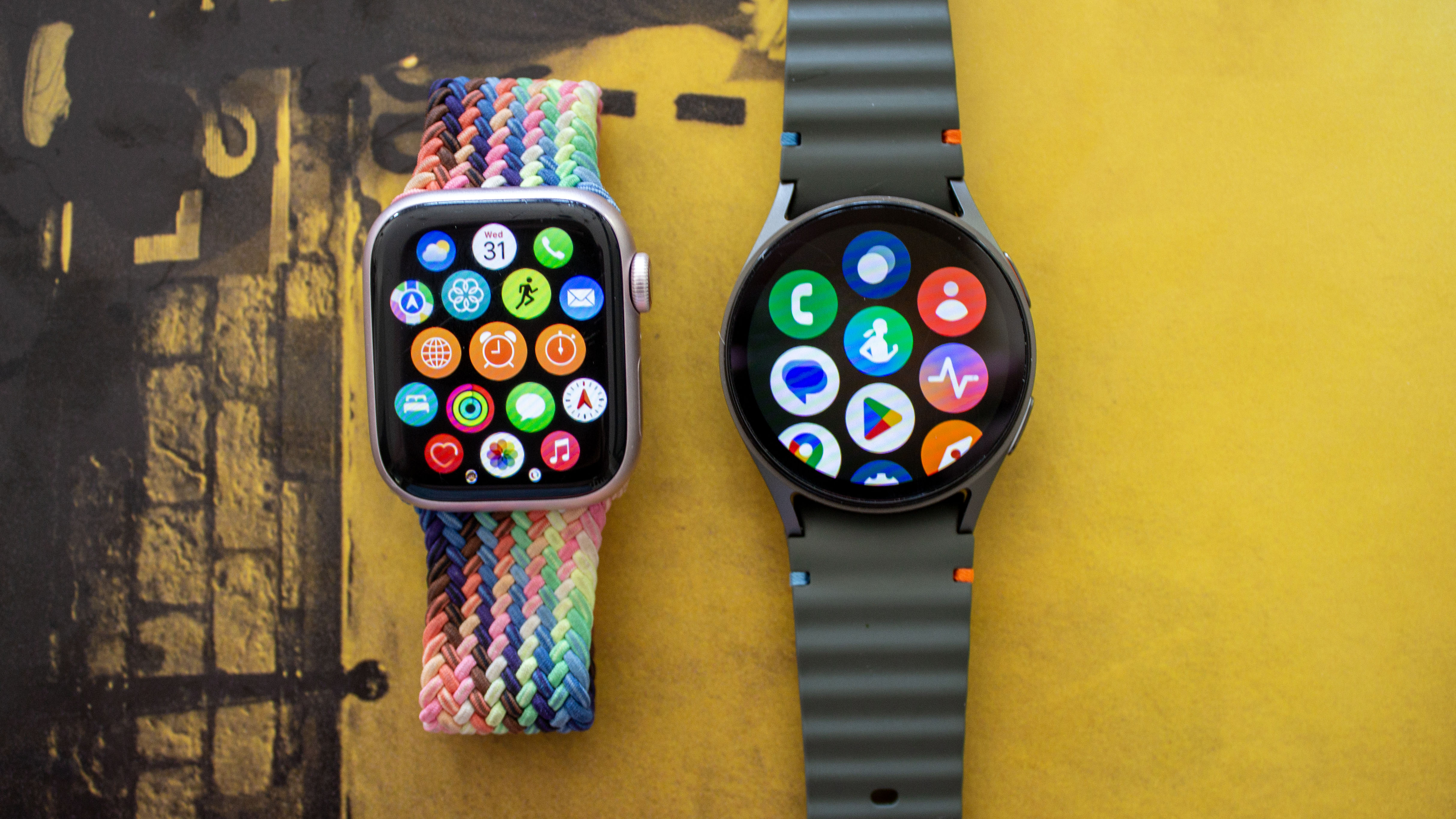
The aluminium casing is lovely and lightweight – so much so that I have barely noticed it on my wrist over the last week I have been wearing it (which I have done day and night). My review unit is paired with the Green Sport Band, which delivers a secure fit with its buckle fastening, along with good adjustment options. The small stitched accents at the top of the strap towards the Galaxy Watch 7's bezels offer a nice pop of colour, too – as they did on the Samsung Galaxy Watch 6 – and I like the orange below the top button.
Arguably the most impressive design feat however, is the floating glass display. Again, it's not new as it was also on the Watch 6, but it's worth mentioning as I found it protected the display (surprising as I thought it would do the opposite). I knock my Watch Series 9 regularly on my concrete dining room table, and that's resulted in a few scratches to the display over the last year. I knocked the Galaxy Watch 7 at least three times during my review period (some might call me clumsy, others might say it's the table at fault), but my Galaxy Watch 7 remains scratch-free.
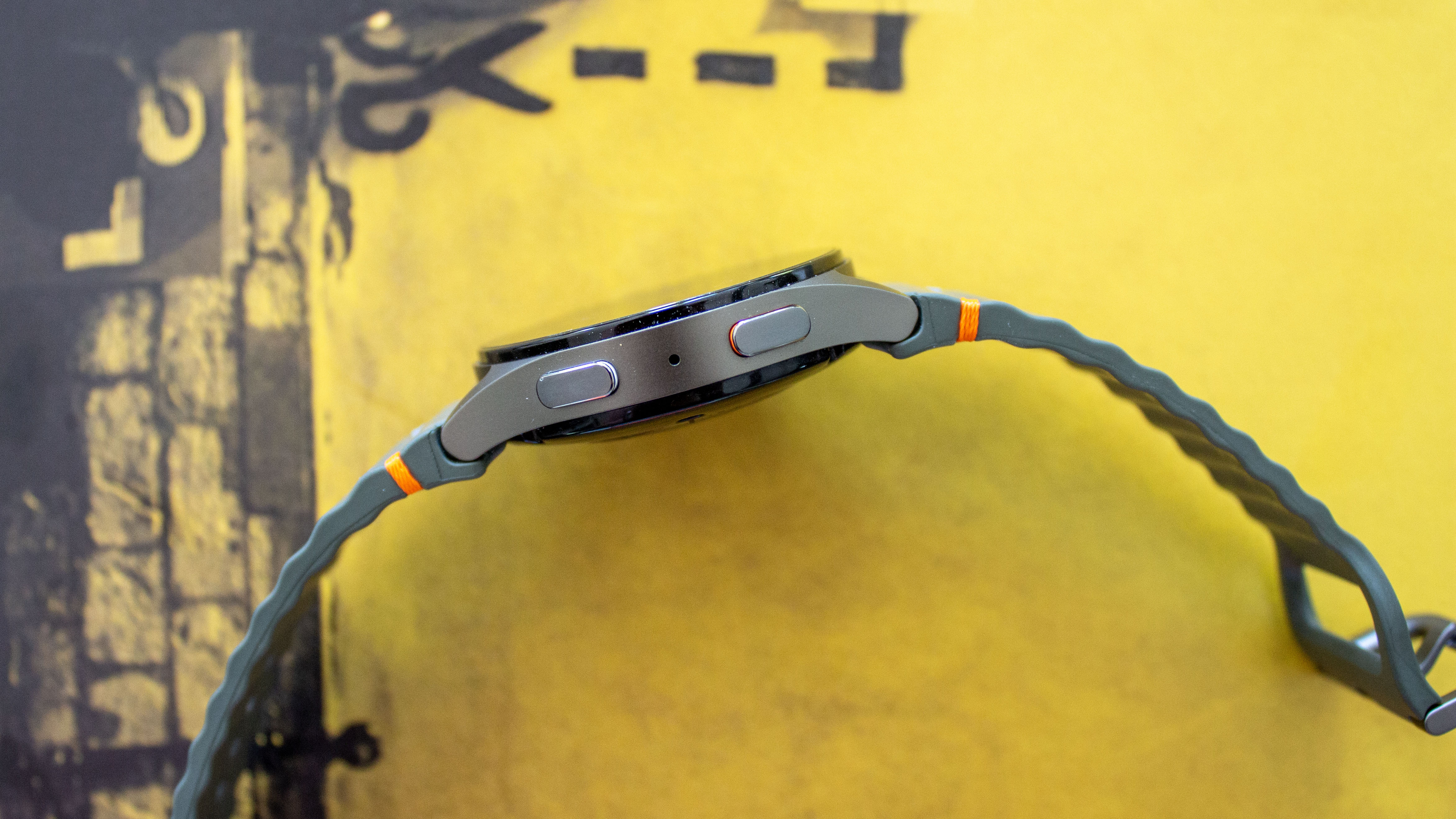
The display is also stunning – something Samsung smashes out of the park with pretty much all its devices from its folding phones to TVs. The Super AMOLED display is punchy, vibrant and rich with detail whether it's displaying heart rate readings or app icons. It's gorgeous and very responsive, whether swiping across to access various features and notifications, down for settings or up for the range of apps available.
Overall it's a fantastic looking smartwatch, with solid durability too and while IP68, MIL-STD-810H and 5ATM might feel like just numbers, its sturdiness was evident in the lack of scratches from my cheeky table.
New features
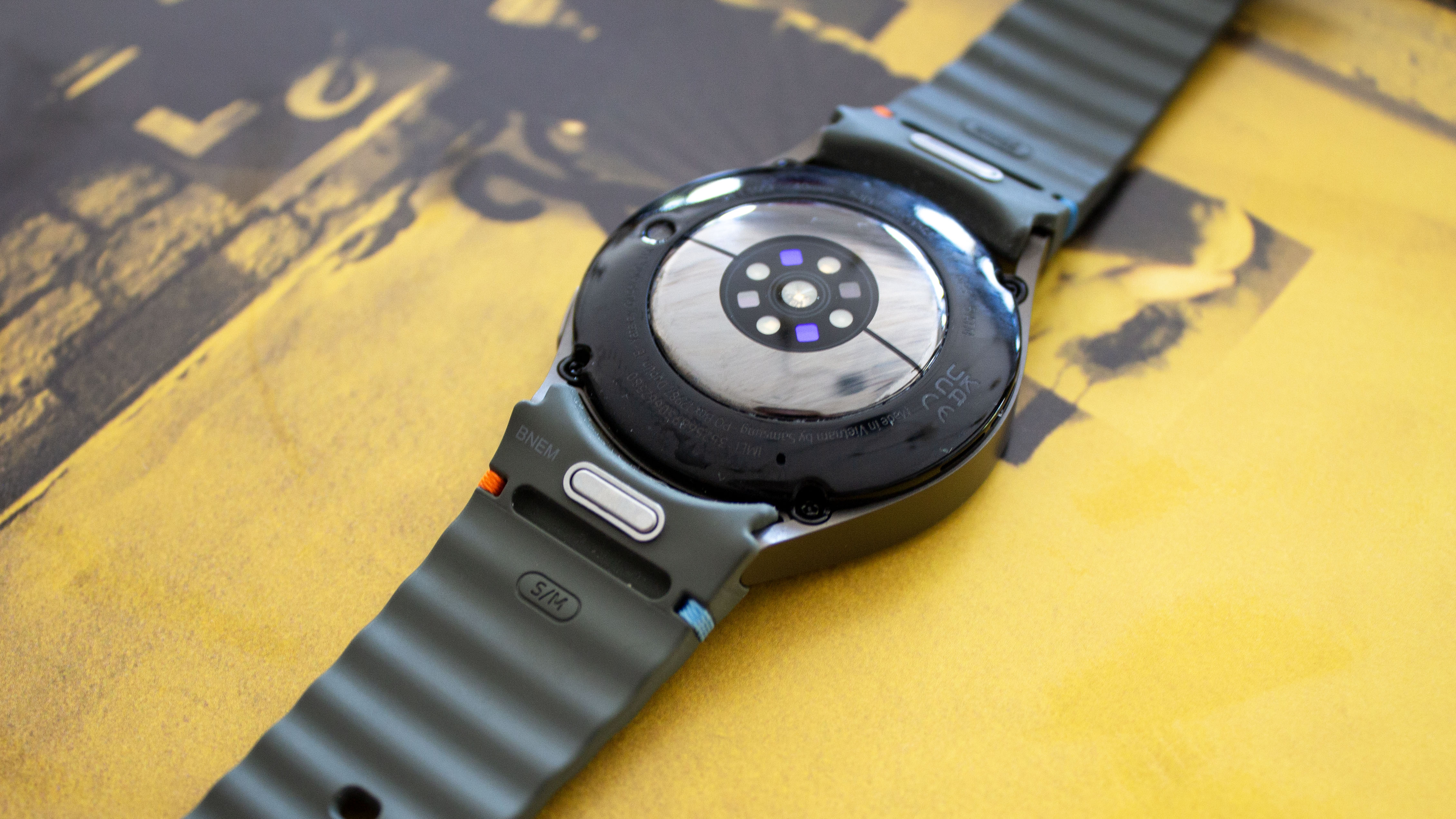
As I mentioned at the beginning of this review though, it's not the design that's changed for the Galaxy Watch 7, but the elements under the hood of that design. The Galaxy Watch 7 ushers in a new processor, with the Exynos W1000 powering everything within this smartwatch. This is a 3nm chipset compared to a 5nm chipset in the Galaxy Watch 6 and what that means is decent performance enhancements and more seamless interaction, like smoother navigation around the One UI 6.0 user interface that runs on top of Wear OS 5.
There's also an enhanced BioActive Sensor for better accuracy and more comprehensive readings – I'll talk more about that in the next section. Elsewhere on the hardware front, Samsung has added a Dual-Frequency GPS system to the Galaxy Watch 7, which is designed to offer precise location tracking and increase accuracy when you're walking, running or hiking in areas with more woodland, for example.
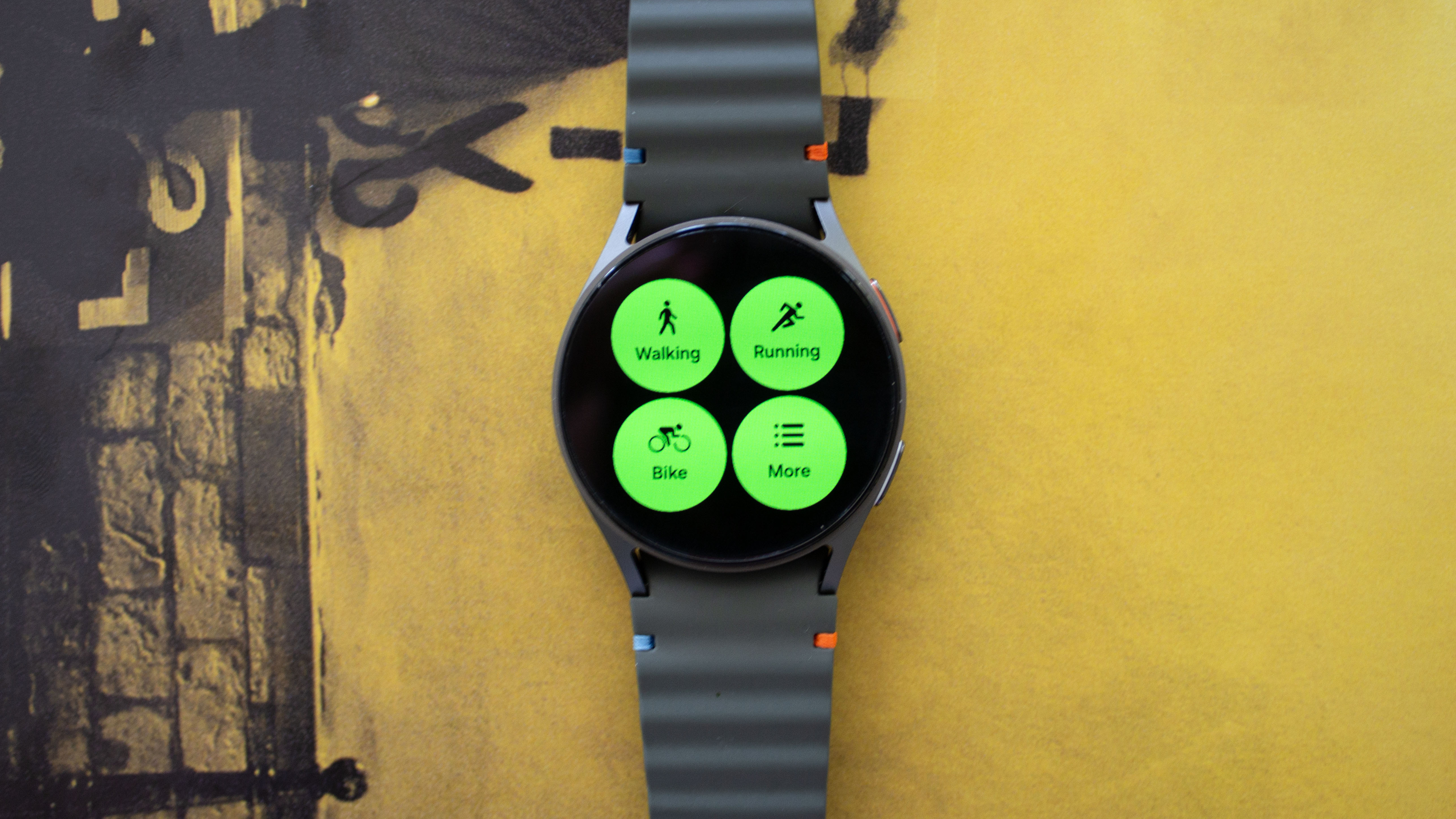
Those features will all remain exclusive to the Galaxy Watch 7 (and the Galaxy Watch Ultra), as they are hardware rather than software features so they aren't something that will come to older Galaxy Watch models with an update. There are new software features too however, many of which are aided by artificial intelligence in the form of Galaxy AI and many of which will come to older Galaxy Watch models with the One UI 6.0 update.
I won't lie, I was tempted to roll my eyes when AI was mentioned for a smartwatch, but Samsung has executed it brilliantly in this device. Suggested Replies isn't my favourite of the new AI features, but it does allow for on-the-go responses from your wrist that you have learned from your conversations.
I had to start up an entire RCS messages conversation with a friend to test it, and while the reply suggestions are a little void of personality, some are unintentionally funny. You can also record thoughts or meeting notes using the Galaxy Watch 7 and get a translated summary on your Samsung phone, which is handy if you have a Samsung phone, of course.
There's also Sleep Apnea risk detection – again, if you have a Galaxy phone – and the Galaxy Watch 7 is FDA-authorised for this feature. Where I adored the use of AI, though, was Energy Score and Sleep Score. I'll talk about both of these more in a second, but it's worth noting they will both come to older Galaxy Watch models, so you will benefit from them without having to buy the latest model.

Double Pinch gestures are also coming to older Galaxy Watch models, enabling you to stop a timer, answer a call, take a picture and play or pause music on your connected Galaxy phone. The feature wasn't flawless in its execution, with the Galaxy Watch taking a while to register for me at times, but it is more advanced than the Double Tap feature on Apple Watch Series 9 and Apple Watch Ultra 2 in what it can do.
The last new feature I'll mention (though there are a couple of other smaller extras in the new software) is the ability to create a multi-workout routine. It's not too dissimilar from what Apple does, where you can create a running workout that includes a warm-up, splits and cool-downs
Samsung doesn't restrict the exercises you can add to running, however, so if you want to create a workout routine with a warm-up, an indoor bike session, a strength workout and a run with a cool down at the end, crack on. It's a good addition and one that those looking to use the Galaxy Watch 7 as a fitness device alongside other smartwatch functionalities will no doubt appreciate.
Health and fitness tracking
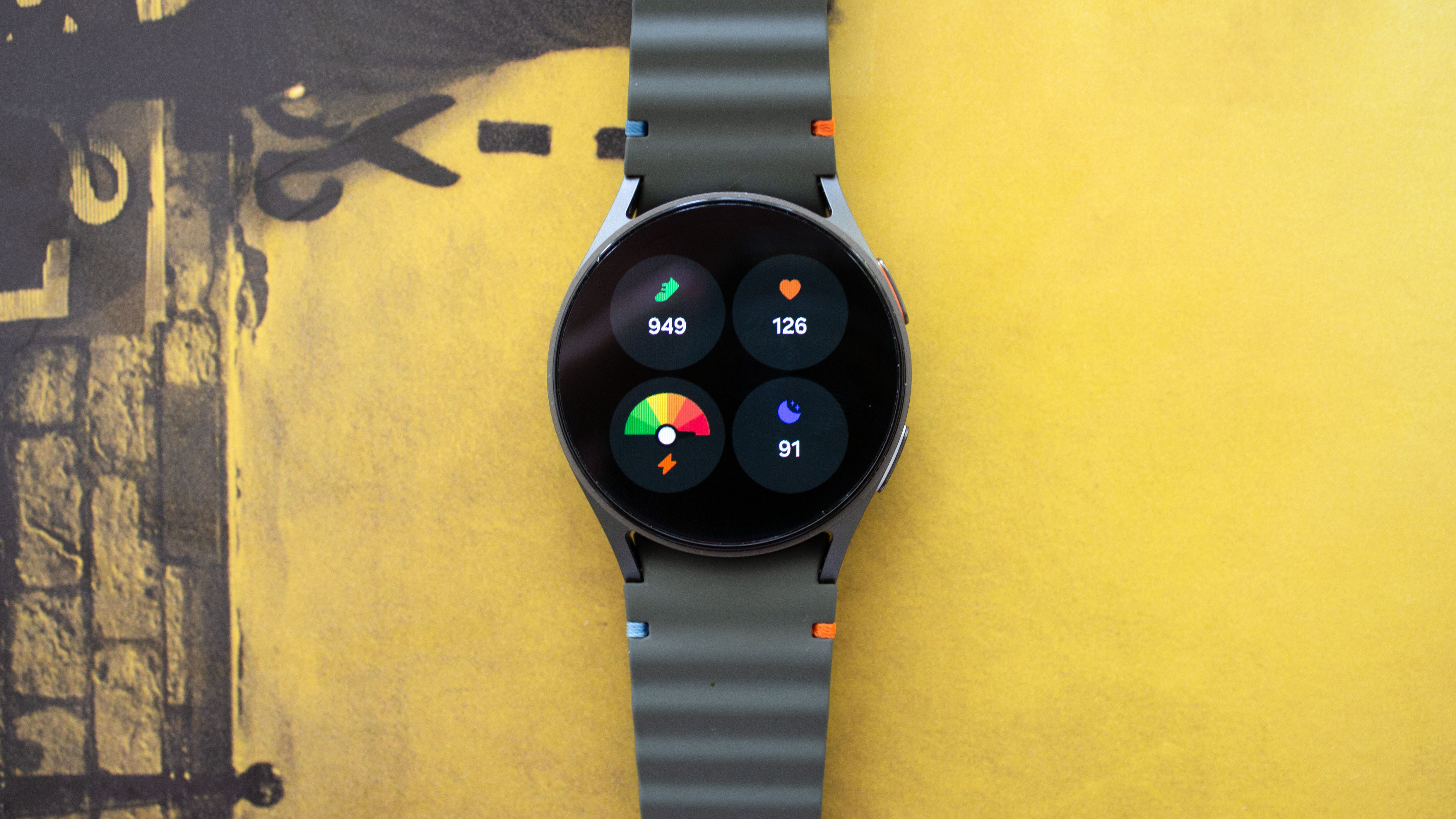
Let's talk about that health and fitness tracking then shall we? In a nutshell, the Samsung Galaxy Watch 7 is impressive in this department. As I mentioned, I wore the Galaxy Watch 7 alongside the Apple Watch Series 9 and during HIIT and cycling workouts, I found the Galaxy Watch 7 to be more responsive to heart rate peaks and troughs.
The two smartwatches were near enough on par when it came to average heart rate overall and calories burned, but during the workouts themselves, the Galaxy Watch 7 was quicker to respond to heart rate changes as the intensity of the workouts increased and decreased.
The workout screens displayed – I mainly did indoor cycling on Peloton and outdoor walking – are full of information and easy to understand, as well as read when exercising. That's where the detail and resolution of the AMOLED display really come into its own with this device, serving up heart rate zones and helpful data in a rich and vibrant format that can be seen clearly even when your heart rate is topping out in zone 5, and there's sweat running off your forehead.
Automatic recognition of exercises like walking was on point too, and again a little speedier to react than the Apple Watch Series 9 despite both being set to automatically record exercise if detected for 10 minutes. I think it's worth mentioning that Apple's Watch Series 9 hardware is coming up to a year old, so a fairer comparison would be the next Apple Watch (expected in September), but that new BioActive sensor certainly seems to be doing what it is supposed to in my experience.
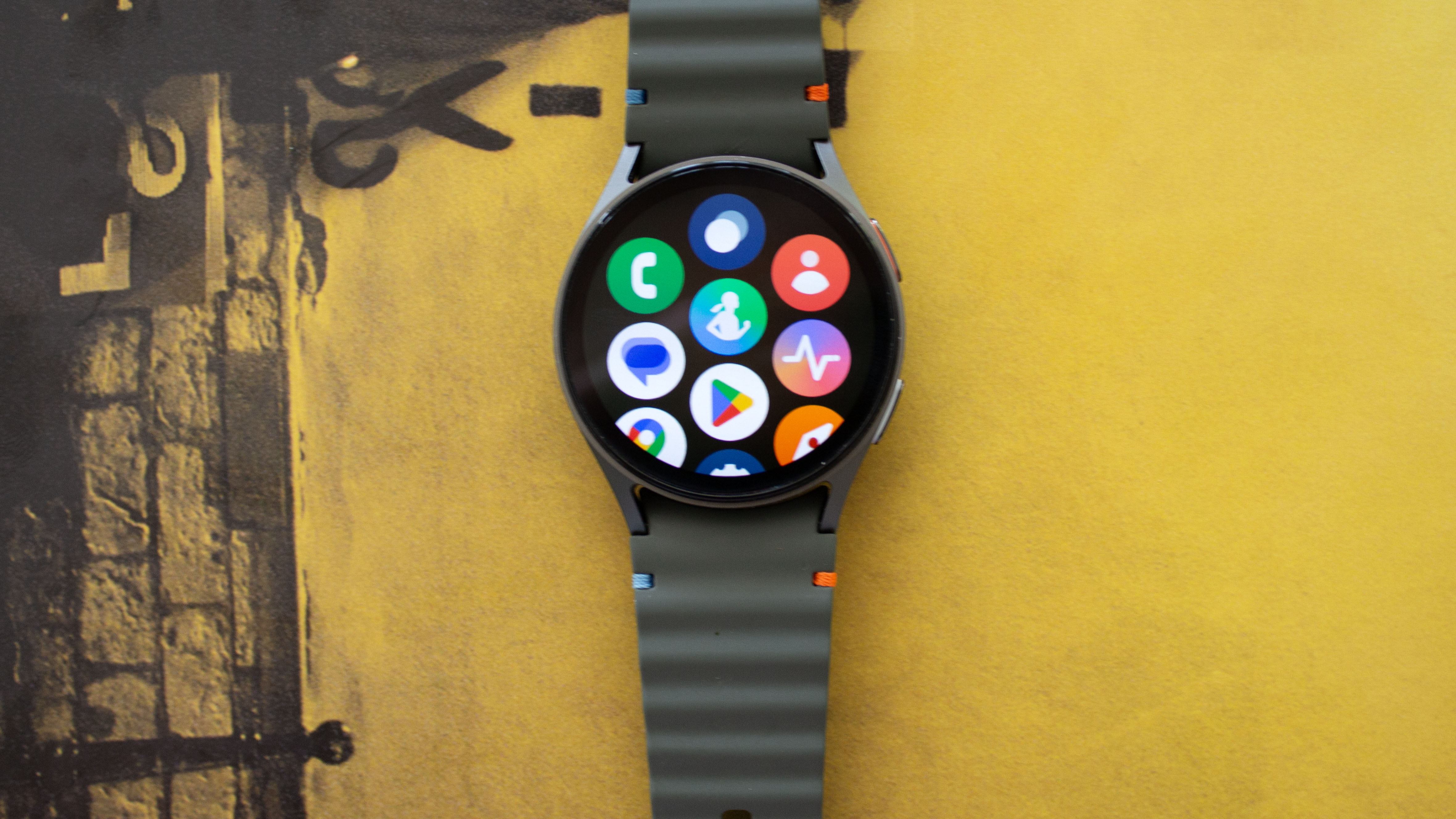
The Galaxy Watch 7 is capable of monitoring SpO2, taking an ECG and offering blood pressure measurements from your wrist too, all of which the Galaxy Watch 6 features. For blood pressure you have to calibrate the Galaxy Watch 7 using a blood pressure monitor, in which you take three measurements on the device and your Galaxy Watch 7 at the same time, recording the measurements from the blood pressure monitor into the Samsung Health Monitor app (separate to Samsung Health) each time.
Following calibration, I found the Galaxy Watch 7 to be pretty accurate, though slightly lower than a typical blood pressure monitor. For example, I got a reading of 110/75 from the Galaxy Watch 7, while the Omron monitor I used offered a reading of 116/77 for the same measurement. It's quite impressive for a wrist-worn device, however, and at least gives you an indication of whether you need to head to your GP.
Of all the health and fitness features the Galaxy Watch 7 offers though, it was the Energy Score and Sleep Score elements I found the most useful. Of course, you want your smartwatch to be able to track exercise and heart rate accurately if that's one of the main reasons you're buying one, but not all smartwatches are good at taking and analysing data in a concise and simple format to help you make better choices. Samsung should be applauded for that in this device (or this software, more accurately, given it's coming to older Galaxy Watches and the Galaxy Ring, too).
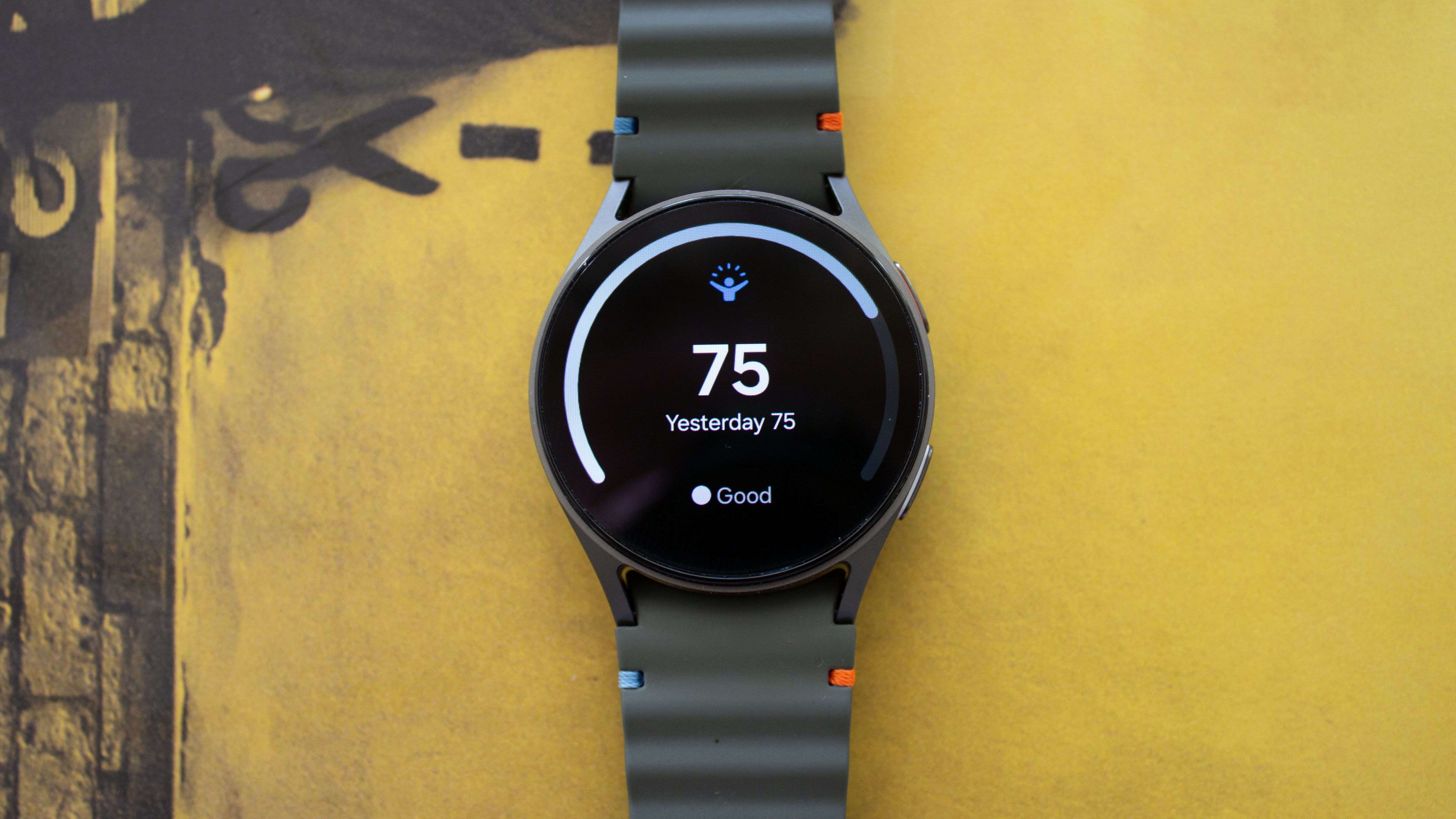
Energy Score is somewhat similar to Garmin's Body Battery, but more in line with Fitbit's Daily Readiness Score. I was told in an interview with Hon Pak, Samsung’s SVP and Head of Digital Health during Galaxy Unpacked in Paris that Energy Score "takes activity over the last day, sleep over the last seven days, sleeping heart rate on average and then sleeping heart rate variability” to calculate your Energy Score for that day.
Unlike Garmin's Body Battery, which gives you a percentage out of 100 in the morning and then depletes throughout the day, Samsung's Energy Score gives you one score in the morning out of 100, and that determines your readiness for the day. The score doesn't reduce throughout the day and instead will vary day-to-day depending on the factors I mentioned. It's also set to get "better and better" according to Pak so I'm expecting more from this in the future.
In use, I loved waking up in the morning to see what my score was and what marks I got for my Sleep Score. It's a great way to help build healthy habits and the AI is good at picking up factors like stress contribution for the times when your score is lower than average. Sleep tracking is accurate, too, based on what I could tell (difficult when you're asleep), though it does seem to give more deep sleep duration than Apple Watch does.
Which of the two is more on the money however, well, that's impossible to tell without being hooked up to proper sleep equipment. That said, all the data is presented in a very easy-to-understand format, along with Sleep Coaching tips (I'm a Lion sleeper, apparently), as well as what you need to do to improve your Energy Score. The overall package is excellent.
Battery life
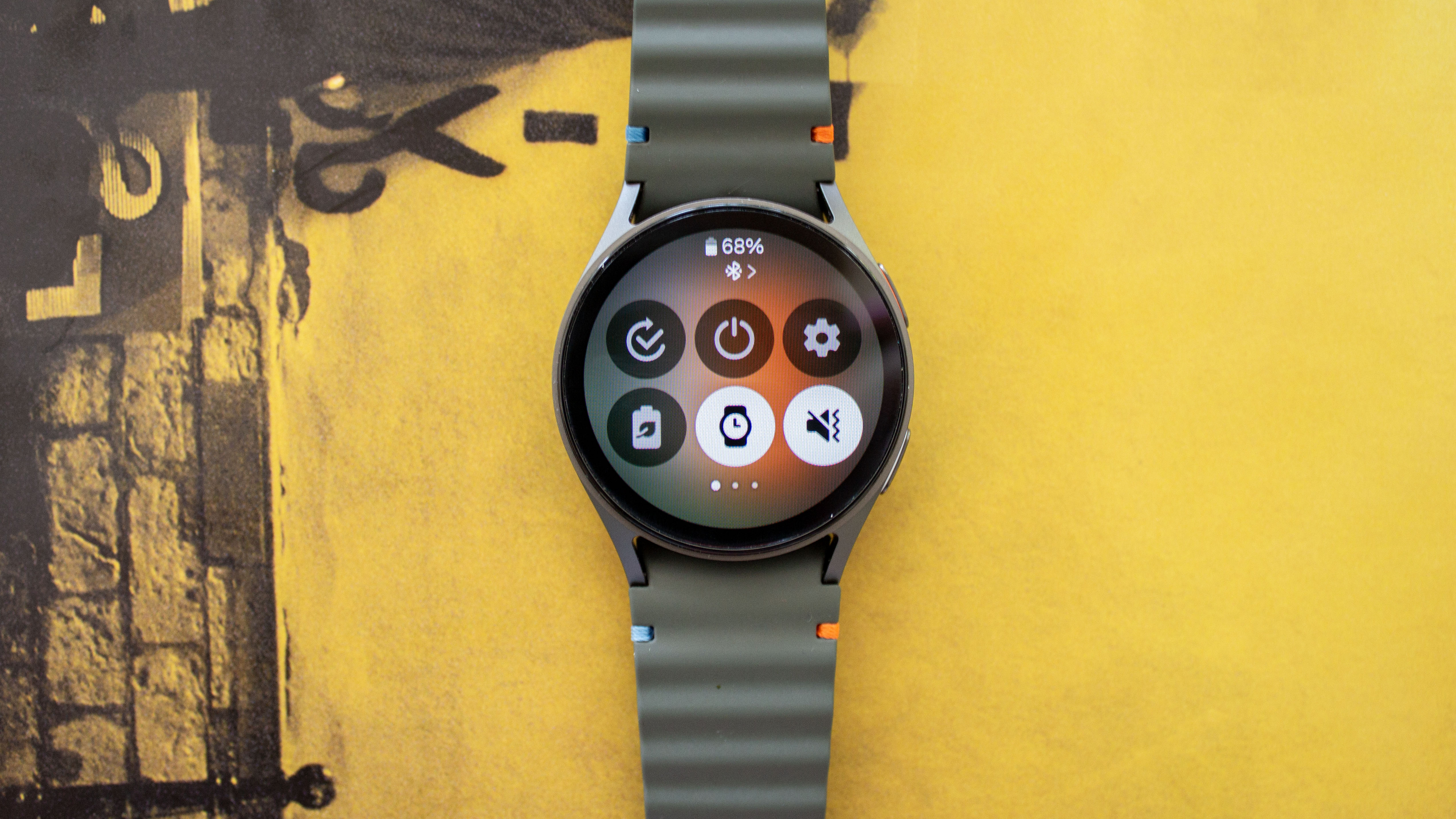
The last thing to mention then is battery life and unfortunately, this is where the Galaxy Watch 7 falls down a little. Getting to the end of a day was a challenge on some days. At the time of writing, for example, I am on 25%, having charged the Galaxy Watch at 10 pm last night before wearing it to bed for sleep tracking and then doing a cycling workout with it at around 12 pm. It's been a quiet day for notifications, and that battery won't make it through the night for sleep tracking if I don't charge it before bed.
And therein lies the other issue with the Galaxy Watch 7: it doesn't charge particularly quickly. Charging speeds top out at 15W, which, although quicker than the Galaxy Watch 6 (tops out at 10W), still takes well over an hour for a full charge isn't ideal.
This will depend on your charging routine somewhat – I always charge a smartwatch before bed in the time between going upstairs, showering and watching TV for 30 minutes before turning the lights off for sleep. My Apple Watch Series 9 will get back to 100% well within the that timeframe, but the Galaxy Watch 7 would still be at 70% (if not less) when I wanted it to be finished.
The Galaxy Watch 7 has a slightly larger battery, and that will account for a small part of that, but the Apple Watch Series 9 will get me through the day and rarely red line before I head upstairs for the day despite being charged at the same time as the Galaxy Watch 7 the night prior.
Samsung has said there is a battery issue with the Galaxy Watch 7 and is working on a fix. When that fix arrives, this may be a different section, but for now, the Galaxy Watch 7 could do better when it comes to battery life.
Verdict
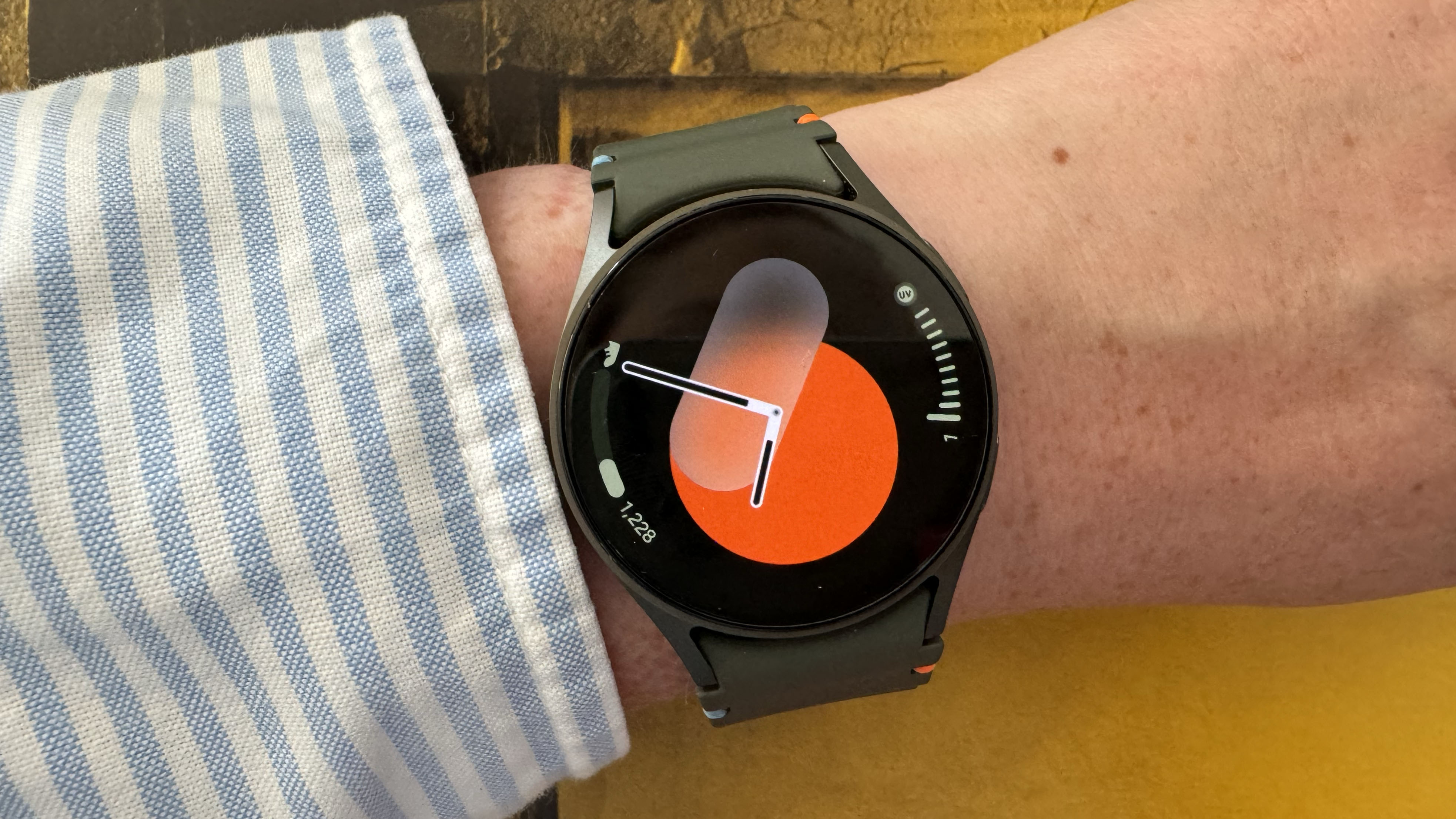
The Samsung Galaxy Watch 7 is a superb smartwatch overall. Its design and build quality is excellent with a lightweight feel that is comfortable to wear day and night, while the AMOLED display is colourful and detailed for clear representation of data and icons.
It's a solid performer too, from the fluid user interface to the responsive sensors, while the use of AI comes in a genuinely helpful format for a selection of great features including the execution of Energy Score and Sleep Score. The battery life needs improvement and there are some features that require a Galaxy phone, while some of the software features are also coming to older models giving you less reason to upgrade.
Ultimately though, if you have a Samsung phone (or Android phone if you're ok with losing some features) and you're looking for a great smartwatch, the Galaxy Watch 7 is one of the best I've reviewed in a long time. There is very little to complain about on the whole and for both design and performance (aside from battery), it excels.
Also consider
The Samsung Galaxy Watch 7 is of course not the only smartwatch around, with several other great options in the market to consider. I've not suggested Apple Watch here because if you're considering the Galaxy Watch 7, you likely don't have an iPhone given the lack of compatibility and the Apple Watch is only compatible with iPhone.
Instead then, you could look at the Samsung Galaxy Watch 6, which will get a number of the software features offered on Galaxy Watch 7 when it is upgraded to One UI 6.0, whilst also offering the same design but likely for a cheaper price now.
If you have an Android phone that's not Samsung, you could consider the Google Pixel Watch 2, which also has a lightweight aluminium build, along with good heart rate tracking and safety features.
For those after a more rugged smartwatch meanwhile, have a look at the Mobvoi Ticwatch Pro 5 Enduro that offers a durable build, snappy performance and good battery life.







